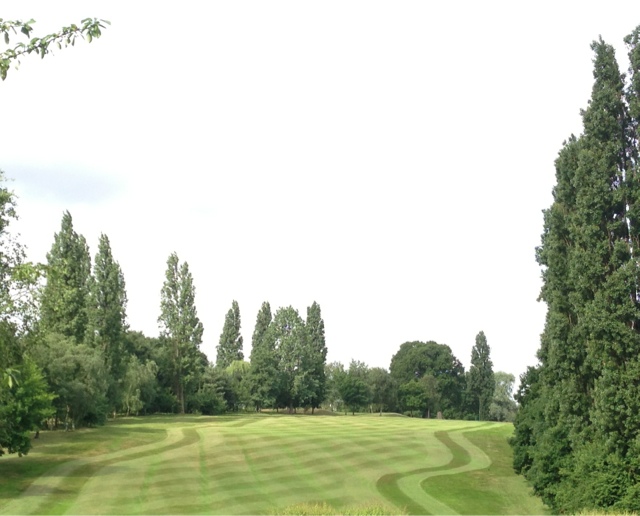It's a bit like a golfers tan, no one wants to see those lines but you learn to deal with it and make the most of it by wearing outfits out at night showing your tanned (See below)!
On the golf course it's no different, we try to protect all the playing surfaces and use our irrigation system correctly and then try to show the golf course off as good as we can.
During June we only received 26mm of rain during the entire month, thats 50% down on average figures and 120mm less than last years wet June. The rain also only fell over 3 days. Ok, June was still cool with low evaporation rates but this still meant the grass plant finished the month very dry following the spring that never arrived.
At the end of June beginning of July the temperature rocketed up to the 30+ with night temperature still in the mid 20's. At this point we have only had 16 mm of rain in July and that was two thundery showers. this comes as no surprise as we were due a high pressure peak over us especially after all the low pressure troughs of the last couple of years.
Water and moisture management are so important during the kind of weather we have been experiencing. Too much surface moisture can bring disease, while not enough soil moisture will introduce drought stress on the plant.
Before the drought started we applied products like growth regulators to slow the plants metabolism down meaning less water would be required during this spell. We also carried out sarel rolling up to three times a week (see picture below of the units) this basically just spikes the surface allowing the water to go past the thatch layer into the soil quicker.
To help us get a good balance and even penetration, we applied wetting agents as part of our monthly program. Wetting agents basically help the water penetrate into the soils and hold on within the soil structure.
Another important job we do is to monitor our moisture readings and keep them around 30% but we raised this a little more during the intense heat to cope with the higher evaporation rates (these got to 5mm a day).
Everyday we look at the evaporation rate v rainfall rate, look at the moisture levels v infiltration rates and then calculate how much water is required through our irrigation system.
There are some areas on the greens that will always dry off quicker, drain lines, high spots, slopes, different soil make ups under the greens and high wear areas (walk on and off areas). In these areas moisture readings as low as 10% were recorded in these areas with areas next to it ok (see photo below)
To help combat this a lot of hand watering takes place all day and long into the night. This helps to replace the moisture deficit in the soil.
Some people have said that using the irrigation system during the day 'is a waste of time' as the water evaporates. This again depends on the watering you are doing. What are your requirements? Are you watering to penetrate the soil? If so don't water during the day using sprinklers as this will be lost and the sunrise and sunsets are best time to water.
Hand watering hot spots to help moisture levels is fine during the day as you can inject alot of water to one area quickly but watering during the day to give a light spray using the irrigation, to cool the grass leaf tissue and to slow moisture loss can be a very good thing especially during some of the heat we have experienced.
Other works vital to keeping the course alive are things like irrigation repairs, repairs to leaks, lifting pop ups and digging out any obstructions in the way of the sprinklers.
Now on to the outfield areas with no irrigation.
The work to protect these areas starts the year before. Verti draining in the winter helps root development and allows moisture to penetrate deep into the soil structure. This can be held in the clay and be ready to be used during the summer months.
Scarifying fairways in the autumn and spring to reduce the thatch layer, this help rain water to get to the soil quicker. Meaning more is available to help the plant. Wetting agents are sprayed during the spring and autumn to help penetration.
And finally reducing the amount of cutting of these areas also helps, by keeping the plant longer meaning roots stay deeper and the plant will burn off slower.
I hope this has given you a quick insight to what we do to help the course during these hot summer days to try and keep the course in good condition.
















